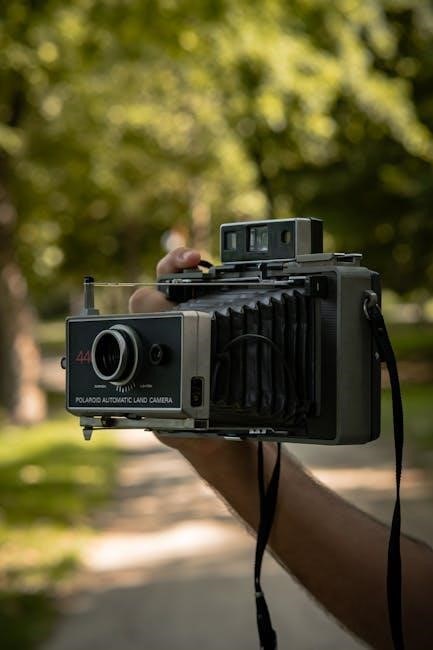
NFPA 72 provides guidelines for smoke detector spacing‚ including installation and placement requirements‚ to ensure effective fire detection and notification‚ as outlined in the National Fire Alarm and Signaling Code documents always.
Importance of Strategic Placement
Strategic placement of smoke detectors is crucial for ensuring effective fire detection and notification‚ as outlined in the National Fire Alarm and Signaling Code.
The installation of smoke detectors in strategic locations‚ such as hallways leading to exit discharges and areas containing cooking appliances‚ is essential for providing early warning in the event of a fire.
The National Fire Protection Association provides guidelines for the placement of smoke detectors‚ including the requirement for installation on every floor‚ including basements and attics‚ and in every room or area as dictated by the building’s layout and use.
Special attention must be paid to sleeping areas‚ as these are high-risk areas for fires to occur.
The guidelines also emphasize the importance of considering the building’s layout and use when determining the placement of smoke detectors.
By installing smoke detectors in strategic locations‚ building owners and managers can help ensure the safety of occupants in the event of a fire.
This is particularly important in high-risk areas‚ such as commercial kitchens and laundry rooms.
Overall‚ the strategic placement of smoke detectors is a critical component of a comprehensive fire safety plan.
Proper placement can help prevent injuries and fatalities‚ and reduce property damage.
The NFPA 72 guidelines provide a framework for determining the optimal placement of smoke detectors in a variety of settings.
Adherence to Codes and Standards
Adherence to codes and standards is essential for ensuring that smoke detector installations meet the required safety standards.
The National Fire Protection Association (NFPA) provides guidelines for the installation of smoke detectors‚ including the NFPA 72 standard.
This standard outlines the requirements for the installation‚ maintenance‚ and testing of smoke detectors.
Compliance with NFPA 72 is crucial for ensuring that smoke detectors are installed correctly and function properly.
The standard provides guidelines for the spacing of smoke detectors‚ as well as the requirements for installation in different types of buildings.
Building owners and managers must ensure that their smoke detector installations comply with NFPA 72 and other relevant codes and standards.
Failure to comply with these standards can result in fines and penalties‚ as well as increased risk of fire-related injuries and fatalities.
Regular inspections and testing of smoke detectors are also necessary to ensure that they are functioning correctly.
By adhering to codes and standards‚ building owners and managers can help ensure the safety of occupants and prevent fire-related disasters.
The NFPA 72 standard is widely adopted and provides a framework for ensuring that smoke detector installations meet the required safety standards.

Smoke Detector Spacing Requirements
NFPA 72 outlines specific requirements for smoke detector spacing‚ including maximum distances and placement guidelines‚ to ensure effective detection always and proper installation methods are used.
General Guidelines for Smoke Detector Placement
General guidelines for smoke detector placement are outlined in NFPA 72‚ providing a framework for installers to follow. The code requires smoke detectors to be installed on every level of a building‚ including basements and attics.
Additionally‚ smoke detectors should be placed inside each sleeping room and outside each sleeping area‚ as well as in areas where a fire might start‚ such as kitchens and garages.
It is also important to consider the layout of the building and the location of doors‚ windows‚ and other features that might affect smoke detector placement.
By following these general guidelines‚ installers can ensure that smoke detectors are placed in a way that provides effective detection and warning in the event of a fire‚ and that they are in compliance with the requirements of NFPA 72.
Proper placement is critical to ensuring the safety of occupants and the effectiveness of smoke detectors in preventing injuries and fatalities.
Specific Location Requirements According to NFPA 72
NFPA 72 outlines specific location requirements for smoke detectors‚ including placement on every level of a building‚ inside sleeping rooms‚ and outside sleeping areas.
The code also requires smoke detectors to be installed in areas where a fire might start‚ such as kitchens and garages‚ and in areas with fuel-fired appliances.
In addition‚ NFPA 72 specifies that smoke detectors should be placed at least 10 feet away from cooking appliances and at least 3 feet away from doors and windows.
For rooms with sloping ceilings‚ smoke detectors should be placed within 3 feet of the peak‚ and in areas with beamed ceilings‚ detectors should be placed on the bottom of the beam.
These specific location requirements are designed to ensure that smoke detectors are placed in a way that provides effective detection and warning in the event of a fire‚ and that they are in compliance with the requirements of NFPA 72‚ as stated in the National Fire Alarm and Signaling Code documents.

Challenges in Meeting Spacing Requirements
Inspectors face challenges with measurements and compliance‚ ensuring smoke detector spacing meets NFPA 72 requirements always and accurately.
Concerns with Measurements and Compliance
Inspectors have concerns with measurements and compliance‚ as the spacing between smoke detectors must meet specific requirements outlined in NFPA 72. The National Fire Alarm and Signaling Code provides guidelines for the installation and placement of smoke detectors‚ including the maximum allowable spacing between devices. However‚ inspectors have found that the actual spacing between detectors may not always meet these requirements‚ due to various factors such as ceiling height and room layout. This can lead to compliance issues and potentially compromise the effectiveness of the fire detection system. To address these concerns‚ inspectors must carefully measure and verify the spacing between smoke detectors to ensure compliance with NFPA 72. This requires a thorough understanding of the code requirements and the ability to accurately interpret and apply them in various situations. By doing so‚ inspectors can help ensure that smoke detection systems are installed and functioning properly‚ providing reliable protection for building occupants.

Alternative Spacing Methods and Considerations

Alternative spacing methods are outlined in NFPA 72‚ including considerations for flaming fire detection and solid joist construction always requiring specific guidelines.
Guidelines for Flaming Fire Detection and Solid Joist Construction
For flaming fire detection‚ NFPA 72 provides guidelines in Annex B‚ which can be used to determine the appropriate spacing for smoke detectors. This is particularly important in areas with solid joist and beam construction‚ where the spacing of spot-type smoke detectors must be in accordance with specific sections of the code. The guidelines take into account the construction of the building and the type of fire that is likely to occur‚ ensuring that the smoke detectors are installed in a way that provides effective detection and notification. By following these guidelines‚ building owners and designers can ensure that their smoke detection systems meet the requirements of NFPA 72 and provide a safe and reliable means of detecting flaming fires. The code provides detailed information on the spacing requirements for different types of construction‚ including solid joist and beam construction‚ to ensure that smoke detectors are installed correctly.
Exceptions and Special Considerations for Smoke Detector Placement
There are certain exceptions and special considerations that must be taken into account when placing smoke detectors‚ as outlined in NFPA 72. For example‚ smoke detectors should not be installed within 36 inches of an HVAC return‚ as this can interfere with their ability to detect smoke. Additionally‚ there may be special considerations for placement in areas with high ceilings or in rooms with unusual shapes or layouts. The code also provides guidance on placement in areas with solid joists or beam construction‚ where the spacing of smoke detectors may need to be adjusted. Furthermore‚ there may be exceptions for certain types of buildings or occupancies‚ such as residential or commercial properties. It is essential to carefully review the code and consult with a fire safety expert to ensure that smoke detectors are placed correctly and in compliance with NFPA 72. This will help to ensure the safety of occupants and prevent false alarms. The code provides detailed information on these exceptions and special considerations.



